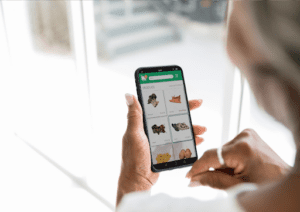Note: Today’s post is part of our “Editor’s Choice” series where we highlight recent posts published by our sponsors that provide supply chain insights and advice. Today’s article is from Omer Ucar at Solvoyo.
 It was mid-March when my flatmate and I burst into a panic as the first cases of COVID-19 were officially announced. Both of the companies we were working for abruptly told us to stay home and work remotely. In several days, the lockdown period started, and we were so anxious that we could neither buy any groceries from supermarkets nor order food from restaurants.
It was mid-March when my flatmate and I burst into a panic as the first cases of COVID-19 were officially announced. Both of the companies we were working for abruptly told us to stay home and work remotely. In several days, the lockdown period started, and we were so anxious that we could neither buy any groceries from supermarkets nor order food from restaurants.
We then realized that we had to use something we rarely used before – online delivery services or the right terminology: last mile delivery.
What is last mile delivery?
 Last mile delivery can be defined as the transportation and delivery of goods to end-users as fast as possible. The seller or the service provider makes sure that you are provided with the goods or service without leaving your home – right at your doorstep. From grocery and food delivery to courier services, there are many uses of last mile delivery. We can spot a surge in delivery services nowadays due to COVID-19.
Last mile delivery can be defined as the transportation and delivery of goods to end-users as fast as possible. The seller or the service provider makes sure that you are provided with the goods or service without leaving your home – right at your doorstep. From grocery and food delivery to courier services, there are many uses of last mile delivery. We can spot a surge in delivery services nowadays due to COVID-19.
Since the beginning of the pandemic, I have been a frequent user of these services. I no longer go to crowded malls to get new clothes nor wait in queues to get packaged goods and even fresh fruits. So let’s discuss what makes last mile delivery essential during the global pandemic:
Convenience
The primary reason why people choose online services over a physical experience is that it is relatively simple and easy. In most cases, the provider has an app where you see what you can get when and for how much. You can even track where your goods are on the map. In my experience, all of the apps I have used got very sleek-looking UI’s and are equipped with live customer support.
Delivery & Pricing
While the brick & mortar retailers are transforming their operations online, some businesses are built from scratch as last mile delivery businesses. These do not have physical stores where customers can shop; instead have only fulfillment warehouse centers or local distribution centers where they keep inventory and fulfill customer orders. The services-oriented for last mile delivery offer lower minimum order amounts and faster delivery, yet, their delivery fees and prices of goods are usually higher than traditional players.
In contrast, traditional players going digital present higher minimum order amounts with more affordable prices. The drawback of big retailers is that they cannot get your order instantly. You are required to choose a time slot for delivery.
Click HERE to read the full article.
















